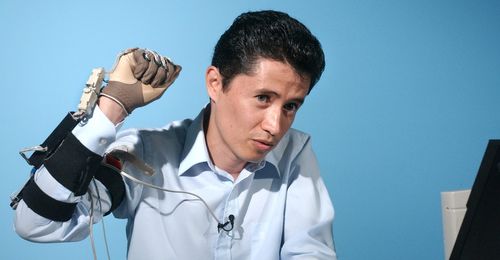Why Sign-Language Gloves Don't Help Deaf People

Why Sign-Language Gloves Don't Help Deaf People
5/11/2022
link
summary
This article discusses the limitations of sign language gloves and their effectiveness in helping deaf individuals communicate. It highlights how these gloves, which translate sign language into written or spoken words, are often seen as a technological solution to bridge the communication gap. However, it argues that such gloves overlook the complexities of sign language and the cultural aspects associated with it. The article points out that sign language is not a direct translation of spoken language, but a distinct and nuanced form of communication. It emphasizes the importance of recognizing and supporting the use of sign language as a valuable and legitimate means of communication for the deaf community.
tags
sign language ꞏ deaf culture ꞏ assistive technology ꞏ communication barriers ꞏ accessibility ꞏ hearing impairment ꞏ technological innovation ꞏ inclusive design ꞏ language barriers ꞏ disability rights ꞏ deaf community ꞏ sign language interpretation ꞏ wearable technology ꞏ haptic feedback ꞏ gesture recognition ꞏ human-computer interaction ꞏ assistive devices ꞏ assistive communication ꞏ accessibility technology ꞏ innovation in sign language ꞏ disability inclusion ꞏ assistive solutions ꞏ technology limitations ꞏ limitations of sign language gloves ꞏ challenges faced by deaf people ꞏ advancements in assistive technology ꞏ inclusion in technology ꞏ barriers to communication ꞏ deaf education ꞏ sign language recognition ꞏ deafness ꞏ limitations of technology ꞏ technology and society ꞏ technological advancements ꞏ accessibility solutions ꞏ sign language barriers ꞏ sign language development ꞏ assistive tools ꞏ deaf advocacy ꞏ technology and disabilities ꞏ digital divide ꞏ communication devices ꞏ limitations of sign language interpretation